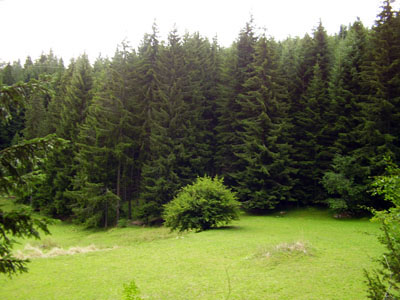 RHODOPES
RHODOPES
Rhodopes
The Rhodope Mountains is the most extensive mountain range in Bulgaria
and spread over nearly one-seventh of the country. Its about is 220-240 km
long and about 100 km wide. The total area of the mountain is
approximately 18,000 square kilometers, around 13,000 of which are on
Bulgarian territory. The Rhodope Mountains is the largest part of the
Macedonian-Thracian massif and represent a complex system of various
height, length, width and direction of ridges, deep river valleys, narrow
gorges and internal mountain valleys.
The Rhodopes offer superb opportunities for tourism, thanks to the diverse
nature of the region, beautiful forests and unique biodiversity, rich cultural
heritage and local traditions.
•Nature Tourism:
With its unique nature and biodiversity the Rhodopes offer numerous
opportunities for specialized activities such as caves studying and bird
watching. The latter in particular attracts many people in the region.
The mountain is famous also with its ancient forests and with its green lawns conserving extremely wide variety of rare and beautiful plants that are of interest for both tourists and professionals.
•Hiking and mountain biking:
With its gentle slopes and numerous hiking trails, the Rhodopes are attractive for mountaineers and for mountain bikers. These forms of tourism are conductive to the many chalets, family hotels and private homes in many villages, especially in the Western Rhodopes. Availability of suitable housing options for makes this type of tourism increasingly popular in recent years.
•Cultural tourism and wellness:
Favorable natural and climatic conditions are one of the reasons for the
settlement of the mountains since prehistoric times - which is evidenced
by numerous archaeological remains from the Neolithic period, the Thracian
civilization, Bulgarian Kingdom I and II. Centuries of Ottoman domination also
left their mark on the culture and traditions in the area. In many villages
and towns can be seen architectural examples of National Revival period
(18. - 19. Century). Today in the Rhodopes live together different ethnic and
religious groups, preserving their ancient traditions and culture.
The area is also rich in mineral springs; many of these springs are used in
balneological tourism. Among the most famous balneological resorts are
Velingrad and Narechen’s Mineral Baths.
•Hunting and fishing:
The Rhodopes offer many opportunities for fishing tourism with its
numerous lakes and rivers filled with trout. Furthermore, Western
Rhodopes accommodate several hunting farms which offer impressive trophies such as deer, bears, boars and other game species.
•Winter sports:
One of the main tourist attractions during winter period is the winter resort Pamporovo (1600 m altitude) near Smolyan. Pamporovo is the southernmost European ski resort, which with its good conditions for winter sports attract many Bulgarian and foreign tourists. Conditions for skiing are present near the town of Chepelare. Currently, two major projects for construction of sports and tourist complexes are under negotiation in the Rhodope region: ‘Syutkya’ near to Velingrad and ‘Perelik’ near to Smolyan.
AREA MAP
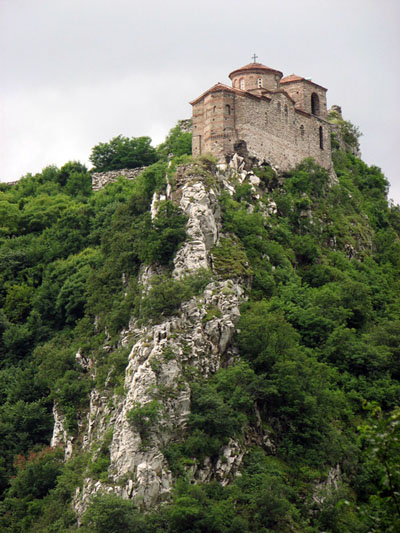 TOWN OF ASENOVGRAD
TOWN OF ASENOVGRAD
Asenovgrad (180 m altitude) is located in the western part of the Upper Thracian Valley, 169 km from Sofia, 19 km from Plovdiv and 84 km from Smolyan. Here is the greatest concentration of monasteries, churches and chapels throughout the country; therefore the town has the glory of the "Little Jerusalem".
Asenovgrad is one of the oldest towns in Bulgaria. In its vicinity are found more than 100 Thracian mounds. The town has a favourable geographical position. This explains its old name Stanimaka, which means the defence of passage.
In 1230 Ivan Assen II strengthens and expands the Stanimaka’s fortress. For this reason it was renamed to Asenovgrad fortress and the town - to Asenovgrad.
Asenovgrad is known mostly by the wine production
Asenovgrad is connected to the rest of the country mostly by bus and rail. Regular bus lines to Plovdiv (30 min.) Smolyan, Chepelare, Pamporovo, Bachkovo Monastery, Haskovo, Kardzhali.
Sightseeing to be visited in Asenovgrad and its surroundings are:
•The Church St. John Baptist "- XII-XIVc.
•The Church St. George - 1843.
•The Church St. Mary - 1760
•Museum of viticulture and wine
•Historical Museum
•Ethnographic Museum
•Paleontological museum
•Bachkovo Monastery
•Arapovski Monastery St. Nedelya
•Muldavski Monastery St. Petka
•Doll Monastery of St. Cosmas and Damian
•Gornovodenski Monastery St. Kirik and Julita
Asenovgrad Fortress is one of the hundred tourist sites (it has a stamp), declared a national monument. It is a medieval fortress, situated on a limestone rocky peak on the left bank of the river Asenitsa (in the Rhodope Mountains), just above where the river gorge narrows to almost vertical rocky shores.
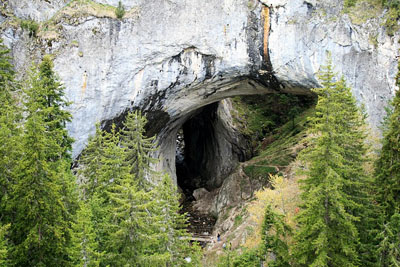 WONDERFUL BRIDGES
WONDERFUL BRIDGES
Wonderful bridges are rock phenomenon also known by the name of Rock bridges. Situated in a karst valley of the river Erkyupria in the Western Rhodopes at 1450 m altitude in the foothills of Mount Large Persenk.
Bridges are formed due to erosion activity in the deep river in the past that had transformed the cracks in the marble in a deep water cave whose ceiling over the time is tapering in some places and collapses. It is assumed that the debris from the collapse was taken subsequently by the river water.
As a result remained two known marble bridge. Both bridges are safe and suitable for tourist purposes. The transition is allowed both on and under them. An interesting tradition has arisen after the announcement of the bridges for a tourist site - every person, past under the large bridge, writes its name with charcoal on the wall.
Wonderful Bridges are among the Hundred National Tourist Sites, the Bulgarian Tourist Union: Number 85 - Mt Large Perelik, a natural sightseeing “Wonderful Bridges”, it has a seal.
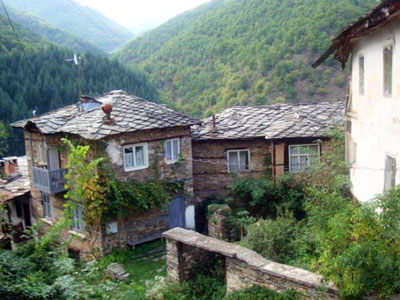 VILLAGE OF KOSOVO
VILLAGE OF KOSOVO
The village of Kosovo is located in the central part of the Rhodopes mountain - ‘Chernatitsa’, near the Balneological Resort ‘Narechen’s bath”, about 5 km. towards Pamporovo. Surrounded by majestic hills of unspoiled nature and its neighbourhoods are crossed by four never failing rivers.
In the village of Kosovo is preserved typical Rhodope architecture renaissance. The village has 63 cultural monuments, 5 of which of national significance. Two of the buildings are work of the famous master Hadji Georgi Stanchovski, who has also built the houses of Koyumdzhioglu and Dimitar Georgiadi in the Old Town of Plovdiv. These are the Assumption Church in 1851 and his own house (“Hadjiyska") in 1853. Also extremely interesting is the old school (1889), the chapels "St. Nedelya" and "St. Peter", the water-mill, blacksmith-house, and most old houses in the village.
In Kosovo, you can enjoy the beautiful mountain scenery, to visit the Ethnographic Museum, the Church of the Assumption or the blacksmith-house.
 MONASTERIES
MONASTERIES
The Bachkovo Stavropegial Monastery "Assumption" is the second largest
Bulgarian monastery after the Rila monastery. The Bachkovo Stavropegy is
located in the valley of Chepelare river (also known as Chaya river),
about 10 km south of Asenovgrad. Founded in 1083 by the Byzantine
military commander Grigorii Bakuriani and his brother Abazii who are
Georgians. The monastery was patronized by Tsar Ivan Alexander during the
Second Bulgarian State, as evidenced by his image in the arches of the
narthex in the ossuary as a sign of gratitude for his contribution in restoring
the building. Like many other monasteries in the Bulgarian lands the
Bachkovo monastery also houses a small school (from XI century). It is believed
that after the fall of Bulgaria under Ottoman domination in the late XIV
century Patriarch Evtimii was sent into exile in the Bachkovo monastery.
Here the patriarch and his students develop an active religious and cultural
activity. St. Evtimii died around 1404.
In the monastery temple of the Bachkovo monastery is kept the miraculous
icon of Virgin Tenderness. She was given as a gift to the monastery in 1311 by
two Georgian travellers - Athanasius and Okrapir. There is also a legend that the icon itself "flew" from a Georgian monastery and "perched" in the "Kluvia” area. From there, the monks brought it to the monastery and put it at the entrance of the temple, to see how with what heart entere into the God's house. Every year on the second day of Easter, they "take" it to its old place and serve a church service.
The monastery has its own museum, in which ritual objects and specimens of the goldsmith's art from different periodi can be seen. In 30’s of 20th c. 103 manuscripts and 252 incunabula are found therein.
Starting East of the monastery in the valley of the river Kluvia, you reach to two interesting waterfalls, and at the bottom of this valley there is a chapel and a large karst spring - The 'St. Archangel' holy spring. Here are found deposits of rare Mediterranean plant species - dendriform juniper.
Krastova Gora (‘Cross Forest’)
In the Rhodope Mountains, surrounded by beautiful scenery is the St. Trinity monastery - Cross Forest or as noted in the map of Bulgaria, Cross Mount. In recent years, among the Orthodox in Bulgaria the monastery gained wide popularity as a Christian holy place of worship. To get to this holy place, you start from Asenovgrad to Smolyan. You pass the Bachkovo monastery and when you come to the road fork to the town of Lucky - Yugovsko inn, you turn to the south. You pass the Village of Borovo and 6 km. from the village you reach to the Cross forest. There are breathtaking panoramic views, a distant sea is visible from the mountain ridges and peaks.
The Gornovodenski Monastery "St. Kirik and Julita" - located in the part of Chernatitsa of the Western Rhodopes, about 2 km. southwest from the town of Asenovgrad.
There is evidence about the monastery that it was built for the first time
in XIVc. near the holy spring (healing spring). It was destroyed along with
many other monasteries and churches during the convert to Mohamme-danism
of Chepino (Western Rhodopes) in XVII century. At the end of the century
the monastery was re-built in the same place, dedicated to St. Petka. A little
later the old monastery of “St. Kirik and St.Julita" was also recovered near the
new one. In 1810 two monasteries were burned and destroyed by
Kurdjalis people.
Doll Monastery of St. Cosmas and Damian - located approx. 2 km. Southwest of
the village of Kuklen in Chernatitsa of the Western Rhodopes. The village itself
is about 8km. West from the town of Asenovgrad.
It is believed that the monastery was founded not later than XIVc. From ancient
times there exists a healing spring. In 1795 is built the ayazmo (holy spring) on
which there is an inscription:
Healing Spring of Holy Bezsrebarnitsi. Life-giving water of St. Cosmas and St. Damian gives strength to the souls and heals bodies of those who come to the source with their faith and draw water for any healing. It cleans grimes of all diseases."
Saints Cosmas and Damian are known in Christianity as healers, so the monastery was known as "St. Healer".
The Muldava Monastery St. Petka is situated near the village of Muldava village about 4 km from the town of Asenovgrad (on the road to the town of Topolovo).
The Muldava Monastery St. Petka was founded in 14c. But soon after its establishment was destroyed by the invading Ottoman hordes. Like most monasteries in that region it has arisen in the vicinity of an ancient healing spring. For the first time since its devastation the records for the monastery under the name "St. Paraskeva" were found in Stanimashka (Asenovgrad) sinurname from 1519 to 1538.
The Arapovo Monastery ‘St. Nedelya’ is located near the village of Zlatovrah (ex-Arapovo) 10 km. from Asenovgrad and 30 km from Plovdiv (the monastery is reached from the town, taking over the road to the Town of Parvomai where it is marked an exit to the right for the monastery).
The Arapovo monastery was founded in the mid-19th century near an ancient spring. Construction of the monastery complex started in 1856 and for this purpose Rhodope craftsmen are invited from the village of Yugovo, headed by Mr. Stoyan Uzunov (Gudevski). In 1859 in the monastery are established a shamparnitsa and a new Bulgarian school and about a hundred students. The monastery was the scene of fight with Greek Phanariots and the Abbot Gervasiy Levkiyski established here a secret committee. In 1868 a school for priests is open in the monastery.
THE RESERVE RED WALL
The reserve red wall is a typical botanical reserve, created to preserve the floristic richness of Chernatitsa / -Prispanska area in the middle part of the Rhodope Mountain. The reserve was established in 1962 with a total area of 229.5 ha in the place of the site deleted in 1956 the Reserve of Bachkovs monastery. Later the territory was expanded three times and now covers 3,029 hectares, located on the lands in the village of Bachkovo, the Village of Dobrostan and the Village of Lucky. In 1977 the Reserve was included in the list of biosphere reserves under the UNESCO “Man and Biosphere ".
"Red Wall" is distinguished for an exceptional variety of plant species depends on the specific combination of geological history, geomorphologic formations and climatic conditions of the Rhodopes. There are 645 species of plants identified and concentration of taxa he ranks first place among the studied so far such protected areas in Bulgaria. There are a total of 96 endemic plant species and subspecies established in the Reserve. From the plants found in the territory of the reserve - thirty-eight species are included in Bulgaria's Red Book - five in the category "endangered" and the rest - with "rare", 21 of them are Balkan endemics. Almost all are included in the European list of rare, endangered and endemic plants (IUCN) and are protected by the Bulgarian legislation.
In the reserve are found 63 bird species 17 are included in the Red Book of Bulgaria.
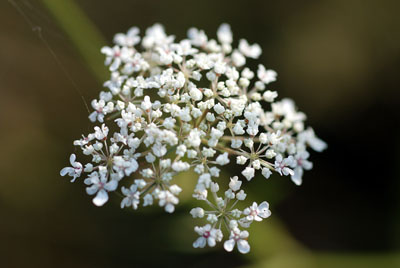 HERBS
HERBS
Herbs - the most common herbs near the village of Narechen’s baths:
•Yarrow (achillea millefolium L) - used to treat headaches, nosebleeds,
inflammation, pain and bleeding gums, decreased gastric juices,
anorexia, worms, arrhythmia, tachycardia, cystitis, pyelonephritis, inflammation
of genitals, uterine bleeding, bed-wetting, hemorrhoids
•Tansy (tanaceum vulgare L) - applies in worms, colic, flatulence, constipation,
anorexia, chronic rheumatism sheba, bile crisis, dandruff, hair loss
•Hawthorn (grataegus monoguna L) - cardiac neurosis, coronary artery
atherosclerosis, hypertension grade I and II, palpitations, arrhythmias,
hypertrophy of the prostate
•Forest violet (viola odorata L) - acute and chronic bronchitis, bronchial asthma,
hypertension grade I, eczema.
•Wild strawberry (fragaria vesca L) - anemia, chronic colitis, diarrhea, liver and
gall bladder disease, gall mehir sand and kidney hemorrhoids.
•Plantain (plantago major L) - periodontal problems, catarrh of the respiratory
tract, peptic ulcer disease, early stages of diabetes, prostatic hypertrophy, boils and difficult to heal wounds.
•Yellow kanatarion (hypericum perforatum L) - gastritis, peptic ulcer disease, sand kidney and gall bladder, painful menstruation, vaginal discharge, bed-wetting, hemorrhoids, depression, fright neurosis, insomnia.
•Geranium (geranium macrorrlizum L) - high blood pressure, cardiac neurosis, insomnia, itchy skin inflammation.
•Nettle (urtica dioica L) - anemia, bleeding, bleeding wounds, general fatigue, anorexia, diabetes, varicose ulcers, varicose veins, rheumatism, hair loss, prolonged and heavy menstruation.
•Blackberry (rubus fruticosus L) - gingivitis, ulcers, airway inflammation, diarrhea, dysentery, diabetes, leucorrhoea.
•Levurda (allium ursinum L) - high blood pressure, bacterial intestinal infections, high serum cholesterol in danger of lead poisoning.
•Lemon balm (melissa officinalis L) - neurasthenia, neuroses, depression, migraine, hypochondria, insomnia, palpitations, cardiac neurosis, angina, ulcers, gastritis colitis, enteritis, high blood pressure, irregular menstruation, inflammation of the gums, boils , weakened eyesight.
•Thyme (thymus sp.diversa L) gingivitis, toothache, inflammation of the respiratory, gastrointestinal diseases, painful menstruation, rheumatic pain, nervousness, neurasthenia.
•Coltsfoot (tussilago farfara L) - gingivitis, asthma, bronchitis, bronchiectasis, upotita and whooping cough, gastritis, stomach ulcers, colic, diarrhea, biliary colic, pyelonephritis, cystitis, hemorrhoids, painful menstruation.
•Oregano (origanum vulgarae L) - tracheitis, bronchitis, bronchial asthma, gastric neurosis, gastric ulcer, gastritis, flatulence, colic, irregular menstruation, skin irritation, insomnia.
•Juniper (juniperus communis L) - babrechnokamenna disease, smishteniya
in uriiraneto, rheumatism, heated, hemorrhoids, skin rashes, chronic
inflammation of the liver, stomach cancer, asthma, chronic bronchitis,
neuralgia, neurosis.
•Black bilberry (vaccinum myrtillus L) - gingivitis, tonsillitis, inflammation
of the airways kavno high pressure, gastrointestinal disorders, diarrhea,
diabetes, rheumatic diseases, weakened eyesight.
•Rosehip (rosa canina L) - diabetes, anemia, atherosclerosis, bleeding from
internal organs, whooping cough, difficulty urinating, sand in the kidney and
gall bladder, excessive menstruation, diarrhea.
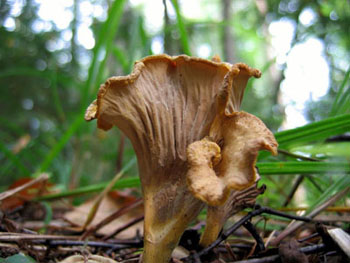 MUSHROOMS
MUSHROOMS
Mushrooms
• pine mushroom "Boletus pinophilus L"
• oyster "Pleurotus ostreatus L"
• plain mushroom "Boletus edulis L"
• maslovka "Suillus luteus L"
• chanterelle "Cantharellus cibarius fr."
• parasol "Macrolepiota procera L"